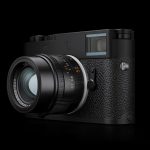(Damaged Blackhawk Rotor by drone collision. Photo by: Federal Aviation Administration)
On September 21, 2017, at 7:20pm, a U.S. Army Black Hawk helicopter collided with a privately owned and operated DJI Phantom 4 Drone about 300 ft above sea level and one mile east of Midland Beach, Staten Island, New York, in the vicinity of Hoffman Island. The helicopter suffered minor damage, and the drone was destroyed, but there were no injuries or ground damage.
The National Transportation Safety Board (NTSB) investigated and found drone pilot Vyacheslav Tantashov, 58, flew his Phantom 4 farther than he could see and, because of his incomplete knowledge of regulations governing the aircraft, caused the crash.
Now here’s the real problem. So far, the FAA has been lenient on hobby drone usage, but you still need to comply with all local, state, and federal regulations. If you don’t have an FAA-approved drone pilot’s license, you need to keep your drone line-of-sight at all times, and outside of all restricted airspace. Mr. Tantashov’s drone was 2.5 miles away from his pilot position and flying within (temporarily) restricted military airspace.
On December 14th, 2017, the FAA, said in a statement that it “will take appropriate action” after completing its own investigation. So far no fines have been issued, but there should be. However, who’s really to blame here?
The drone in question didn’t have geofencing active in its programming at the time of the crash. Geofencing is a virtual barrier created using a combination of the GPS (Global Positioning System) network and LRFID (Local Radio Frequency Identifier) connections such as Wi-Fi or Bluetooth beacons. With an app and your drone active, there are already pre-determined “no-fly” zones. Built-in. The Tantashov’s drone shouldn’t even have been allowed to make that flight in the first place. But with the laws so murky, how was it not installed on the drone?
(DJI Phantom 4 drone like the one Vyacheslav Tantashov was flying)
DJI’s version of geofencing is called GEO (Geospatial Environment Online) and offers users up-to-the-minute information when flight bans or limitations are applied (things like large public gatherings, natural disaster areas, and other events which warrant restrictions).
GEO’s data also includes sensitive locations such as prisons, power plants, and airfields to ensure you’re not in danger of breaking the law due to a geographical misunderstanding.
(And if you’re not sure if your Drone’s geofencing software is active, download the FAA’s B4UFly app for your Android or iOS and check based on YOUR GPS location.)
This case is going to open up a can of worms that is long overdue. It is absolutely the pilot’s responsibility to make sure they’re operating safely. Technology makes everyone feel so safe nowadays because everything works so well out of the box that oftentimes people don’t think of the repercussions.
Geofencing is a thing for a reason, not because the FAA is trying to control where or when you fly your drone, but because you’re the dangerous element, not the drone. There is no license required to fly most small drones, no insurance necessary. User error could lead to serious injury or death.
I know it may seem like a toy, but when you’re flying and shooting with a drone, make sure you’re following the guidelines and that you’re doing it safely, because it’s not always going to be a rotor or a tough army helicopter that you hit, it could be a child, commercial airplane engine, or who knows what.
Rec`s
 Canon Powershot SX420 IS 20 MP Digital Camera with 42x Optical Zoom and Built-In Wi-Fi (Black) + 7pc 8GB Accessory Kit w/ HeroFiber Ultra Gentle Cleaning Cloth
Canon Powershot SX420 IS 20 MP Digital Camera with 42x Optical Zoom and Built-In Wi-Fi (Black) + 7pc 8GB Accessory Kit w/ HeroFiber Ultra Gentle Cleaning ClothZoom Far. Share Away. Capture your family’s precious moments with the PowerShot SX420 IS camera, whether it’s a vacation, a party …
 Canon PowerShot SX420 Digital Camera w/ 42x Optical Zoom – Wi-Fi & NFC Enabled (Black)
Canon PowerShot SX420 Digital Camera w/ 42x Optical Zoom – Wi-Fi & NFC Enabled (Black)The Canon Powershot SX420 IS Digital Camera packs a super zoom in a small package. With 20.0 megapixels, a 3 in. LCD screen and 72…
 Canon PowerShot ELPH 190 Digital Camera w/ 10x Optical Zoom and Image Stabilization – Wi-Fi & NFC Enabled (Black)
Canon PowerShot ELPH 190 Digital Camera w/ 10x Optical Zoom and Image Stabilization – Wi-Fi & NFC Enabled (Black)Canon PowerShot ELPH 190 Digital Camera w/ 10x Optical Zoom and Image Stabilization…







